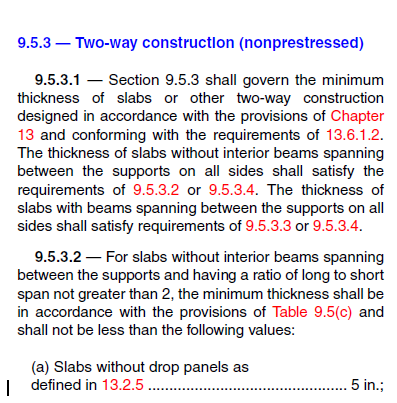cesaramorim
Structural
- Oct 20, 2013
- 31
Good afternoon,
I'm trying to determine a value to the deflection in the long run of a cantilevered slab. I'm modeling in tricalc and it just gives me deflection values for the instant in which loads are applied.
There is some literature on this subject with information regarding the deformation of slabs in a period of at least 5 years? How do forum users handle this technically?
Thank you
Amorim
I'm trying to determine a value to the deflection in the long run of a cantilevered slab. I'm modeling in tricalc and it just gives me deflection values for the instant in which loads are applied.
There is some literature on this subject with information regarding the deformation of slabs in a period of at least 5 years? How do forum users handle this technically?
Thank you
Amorim


